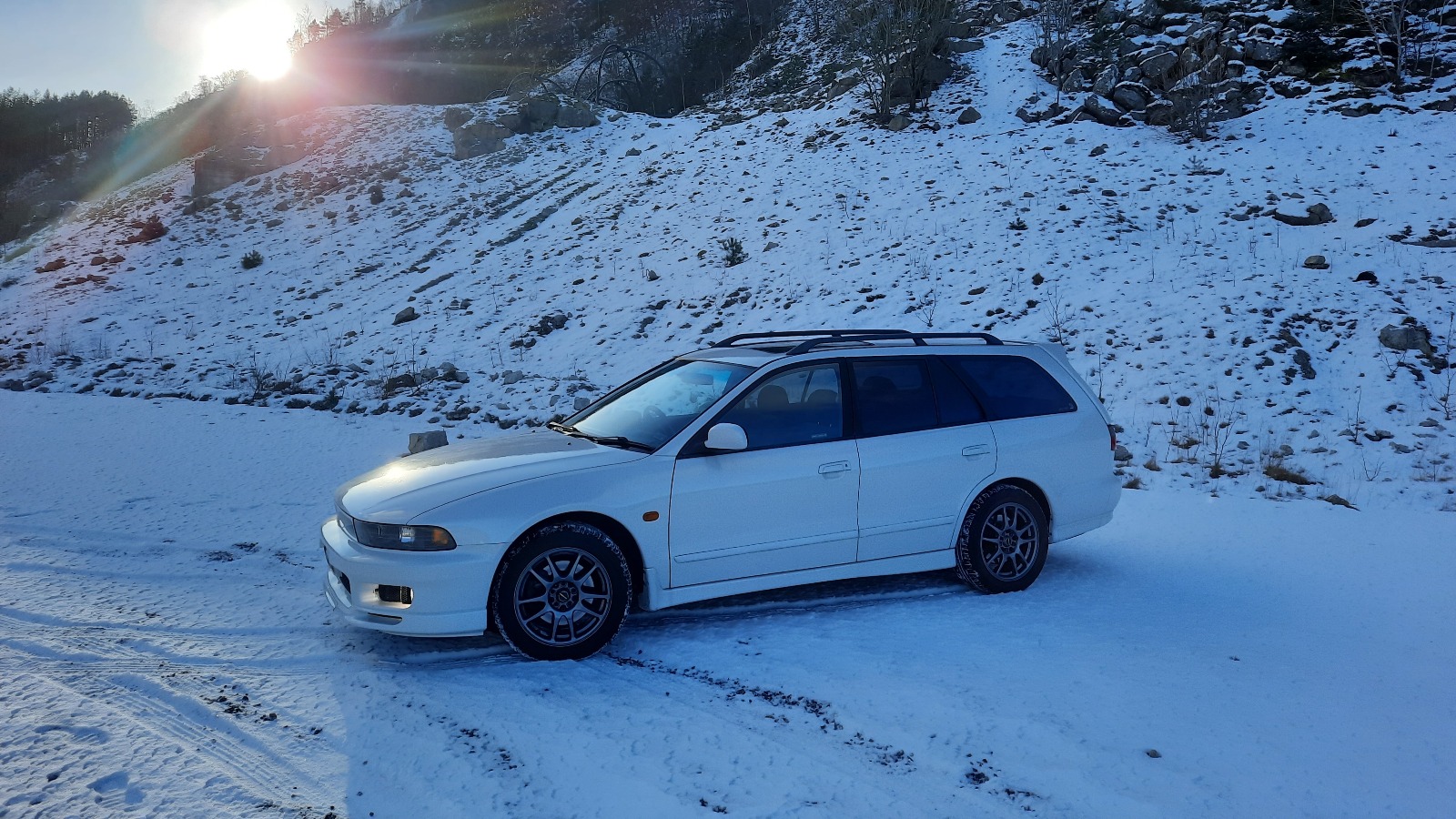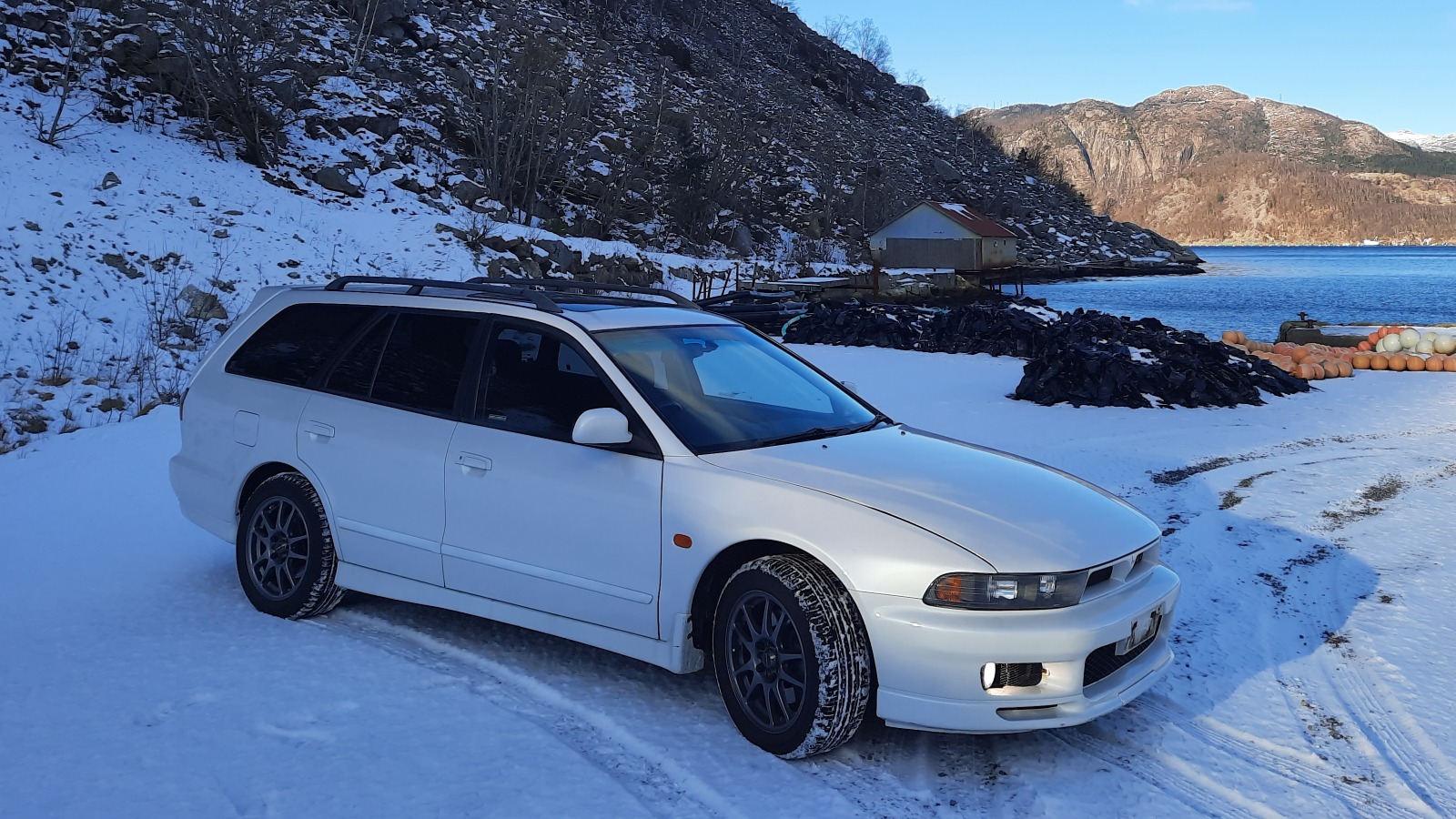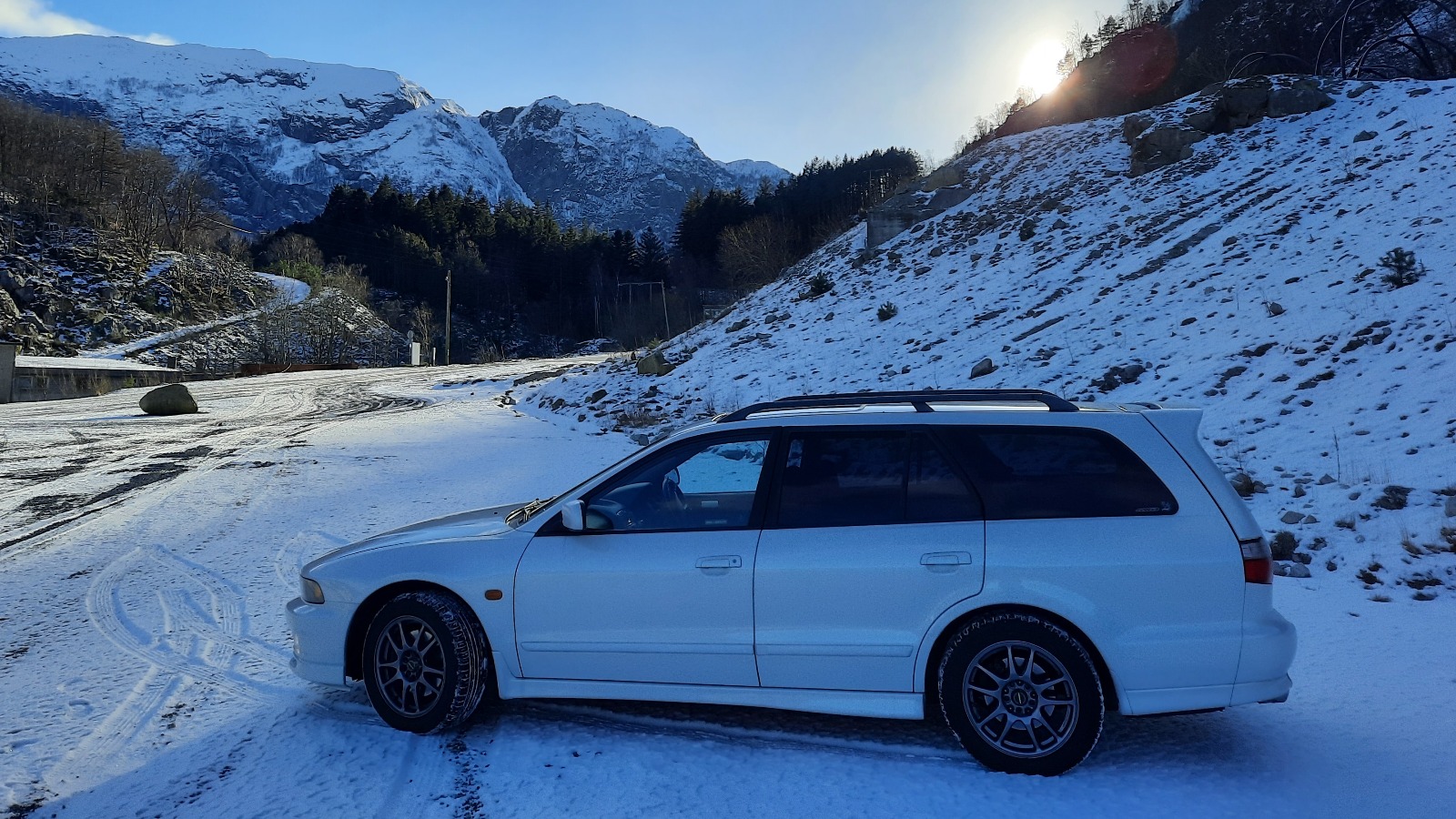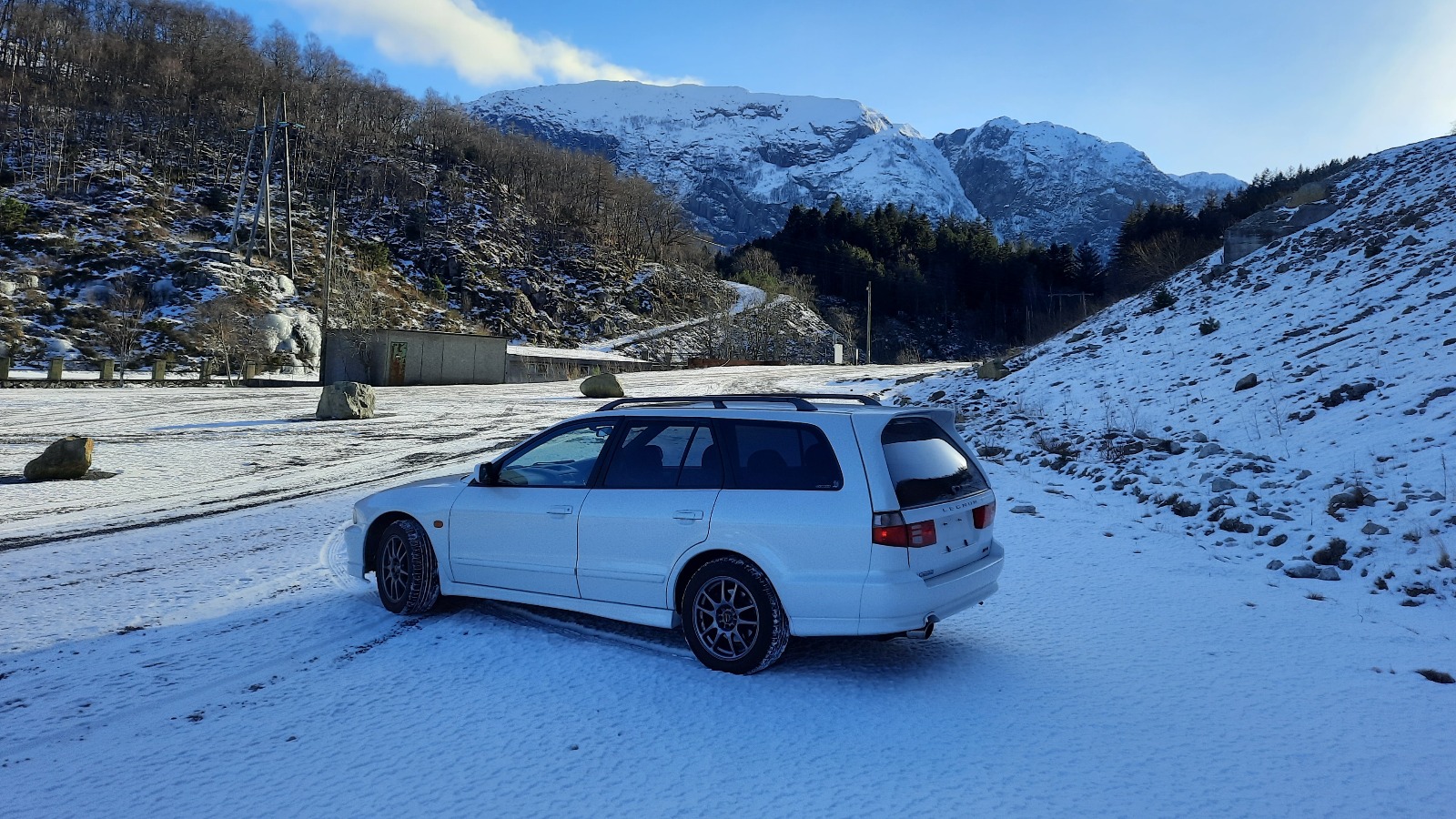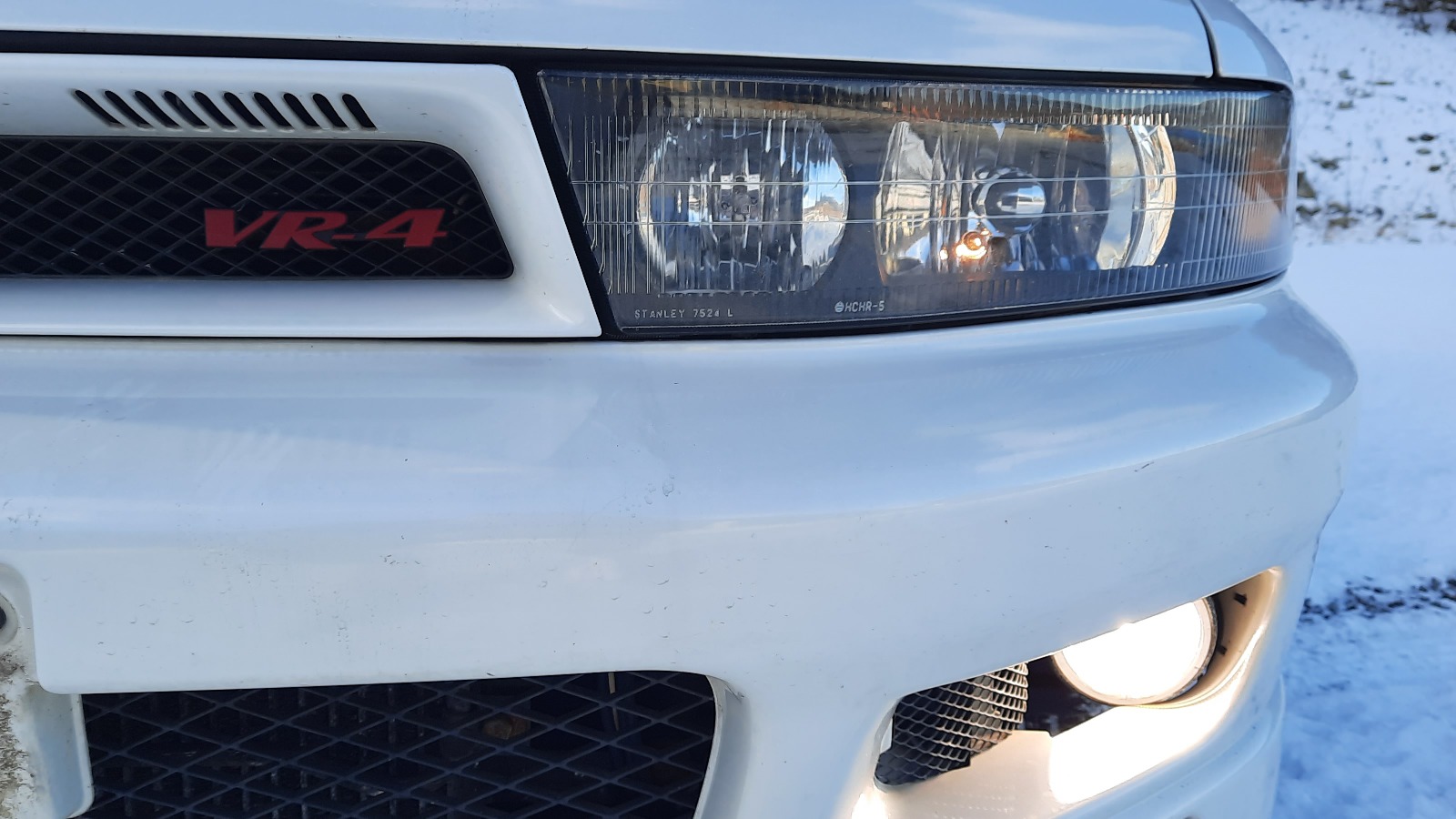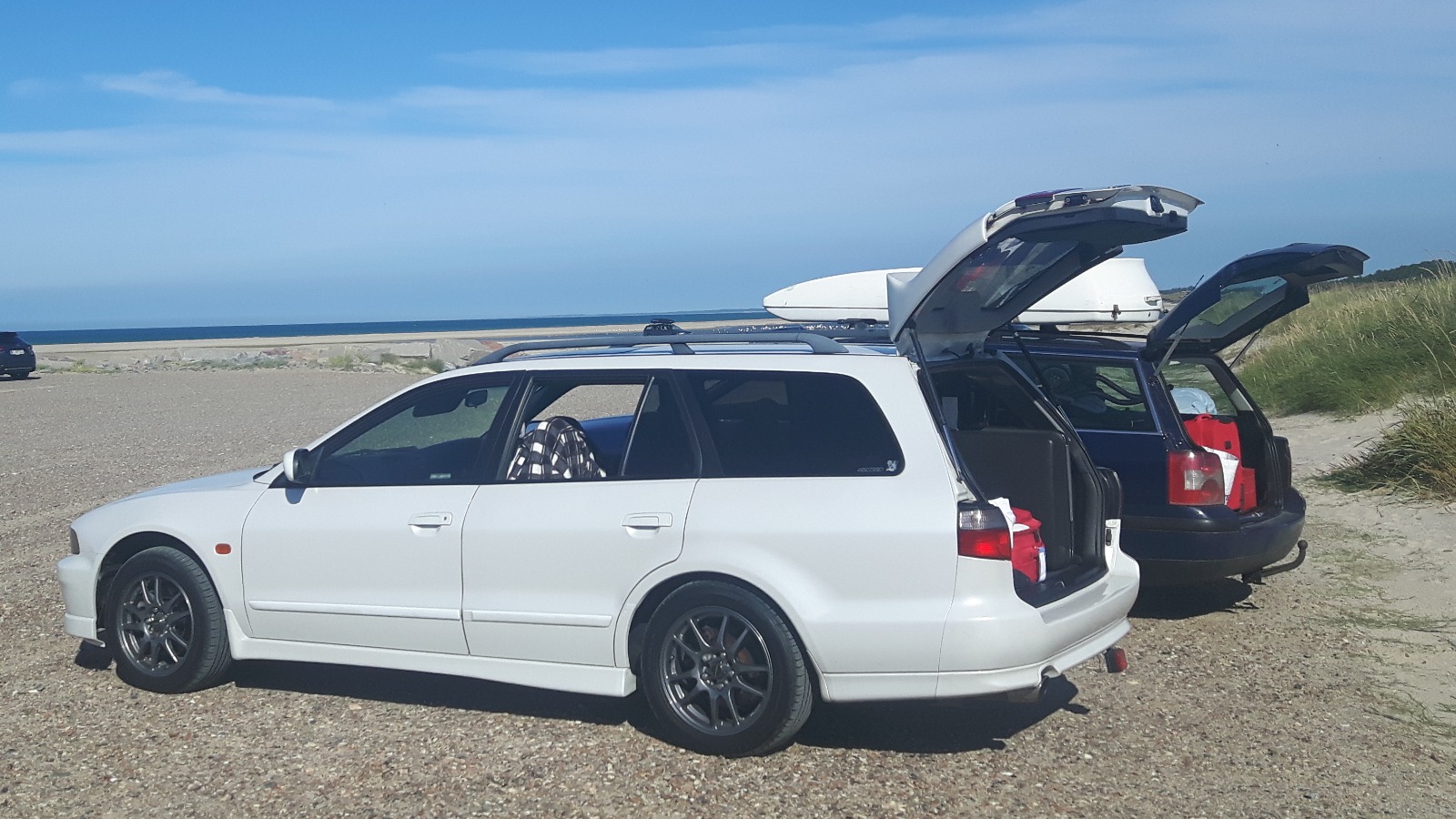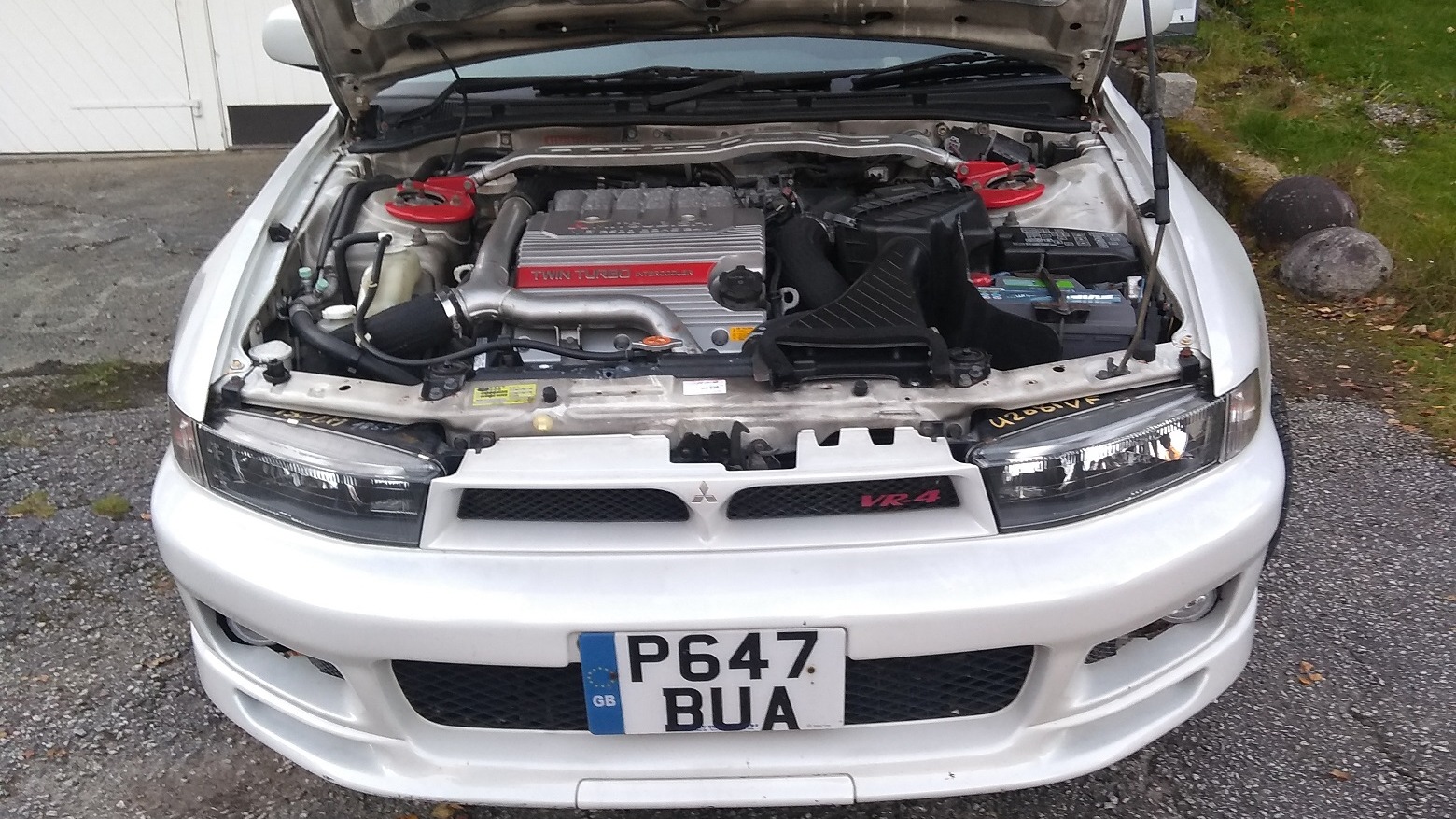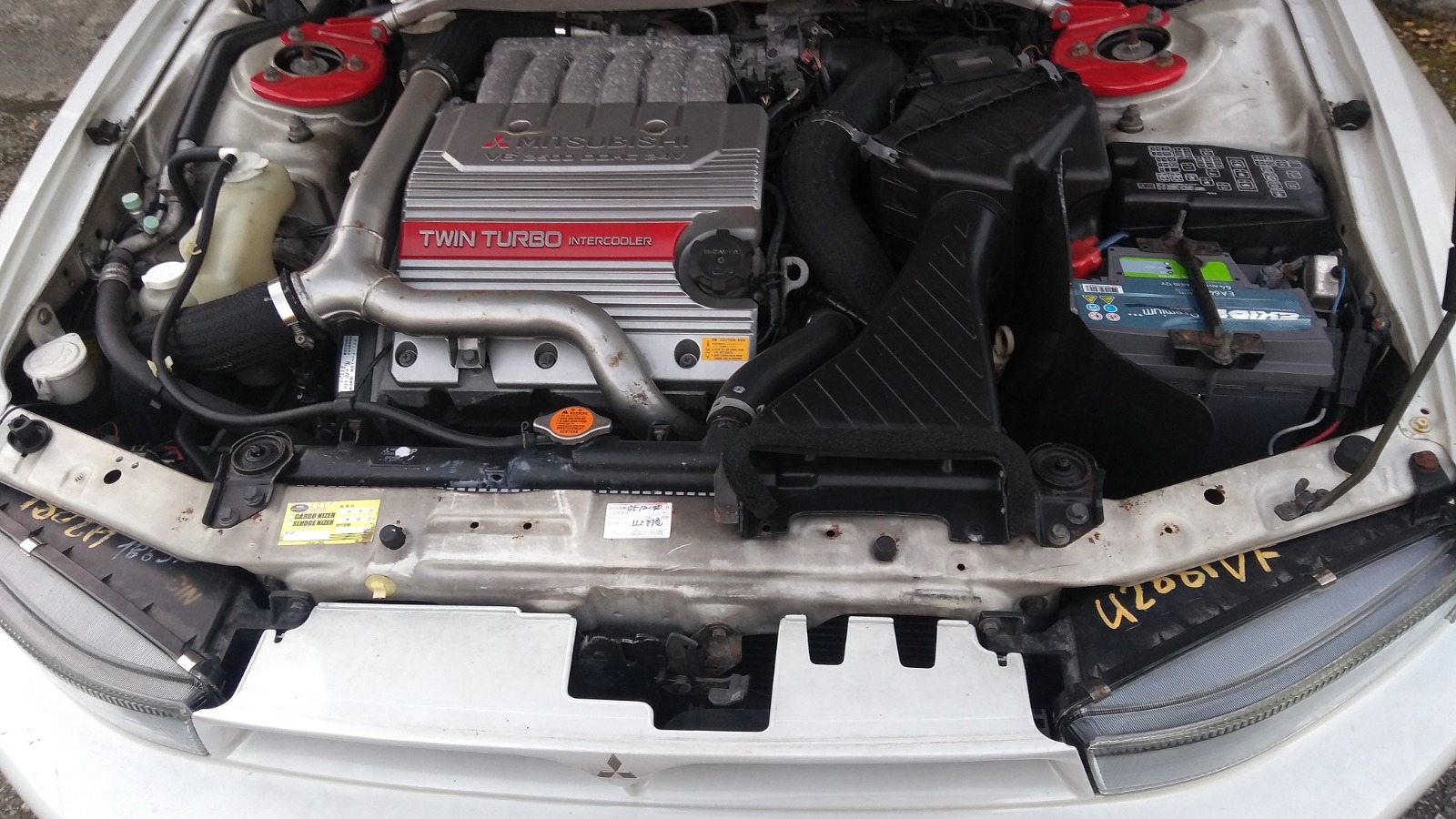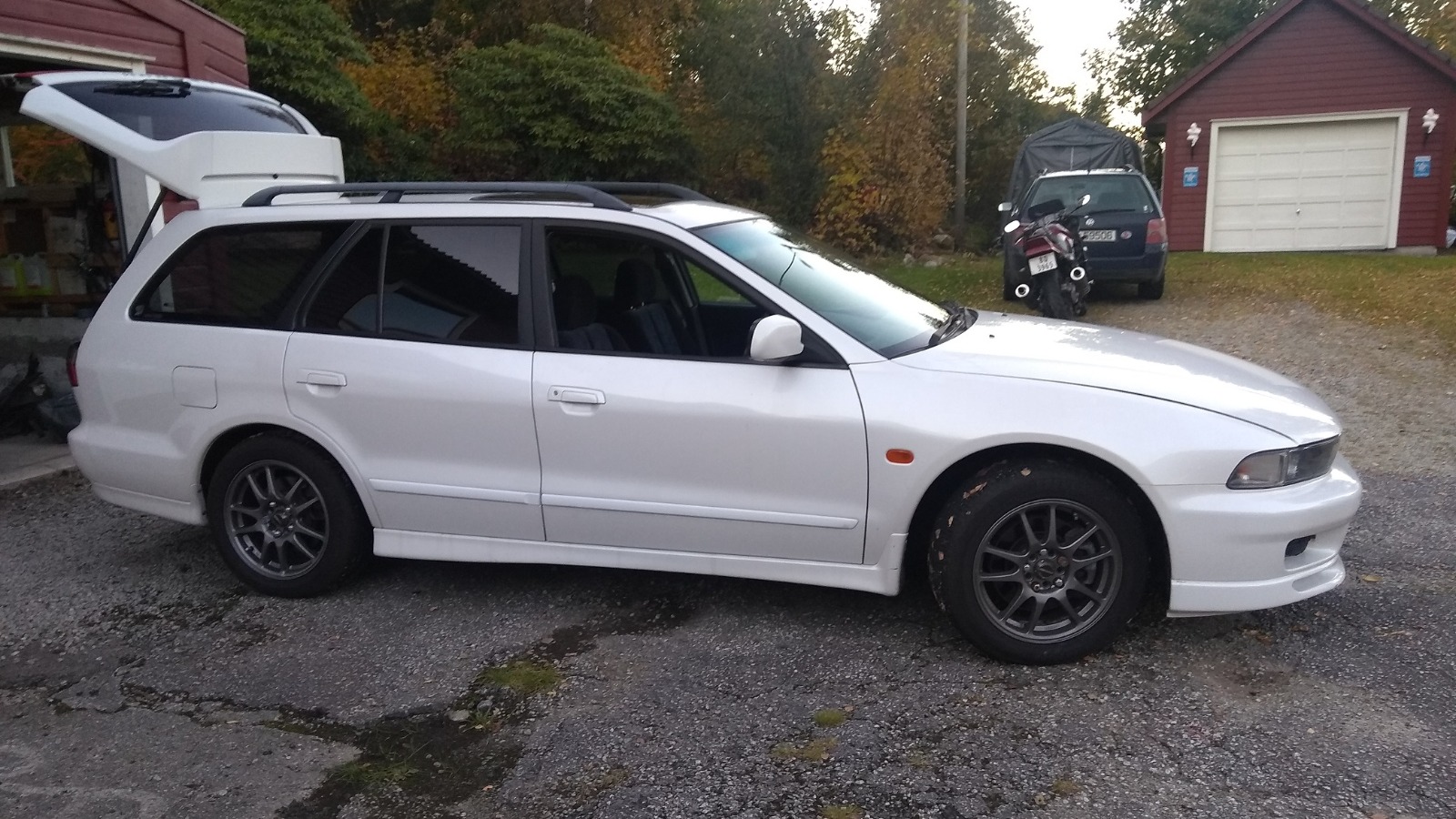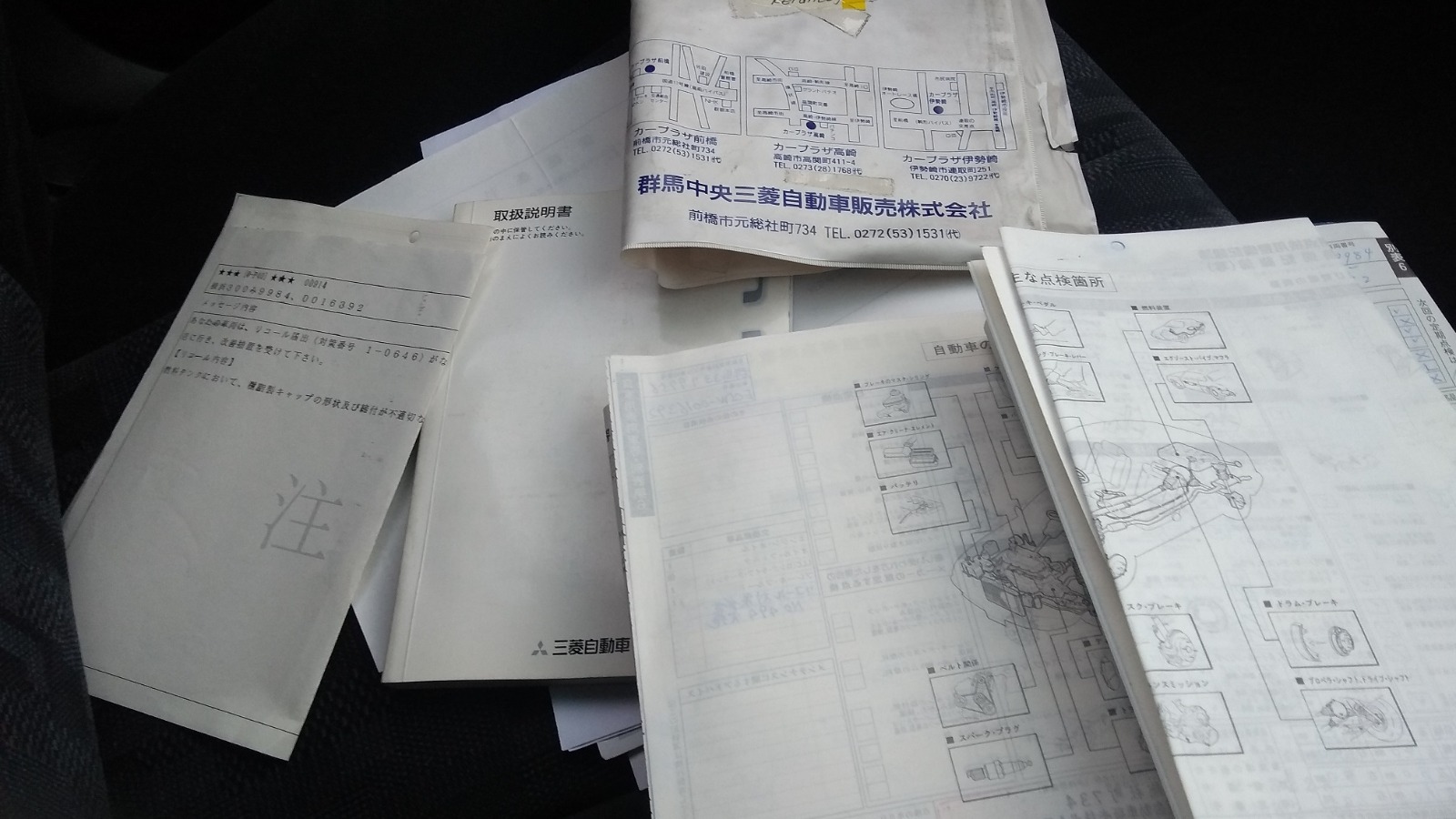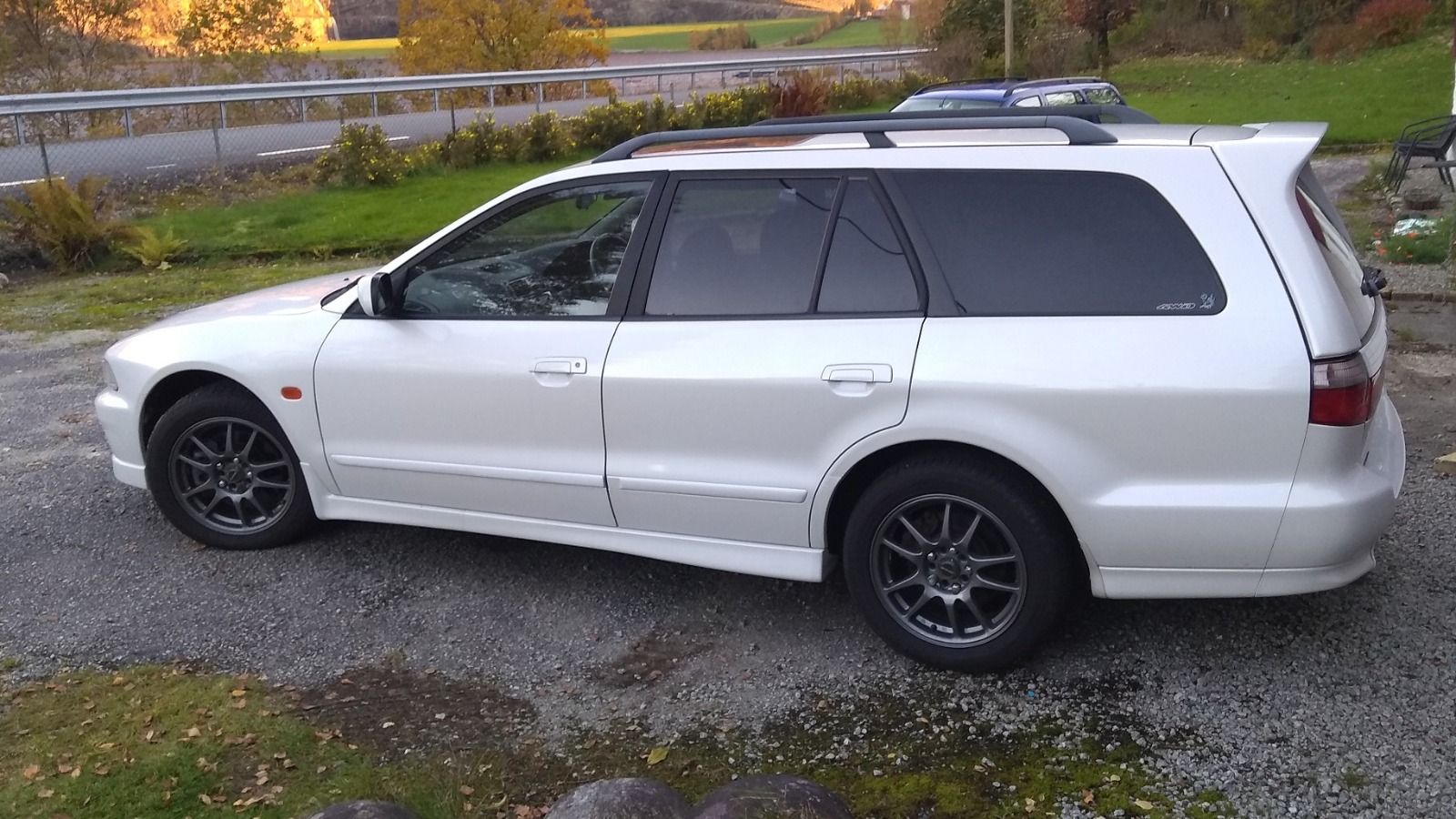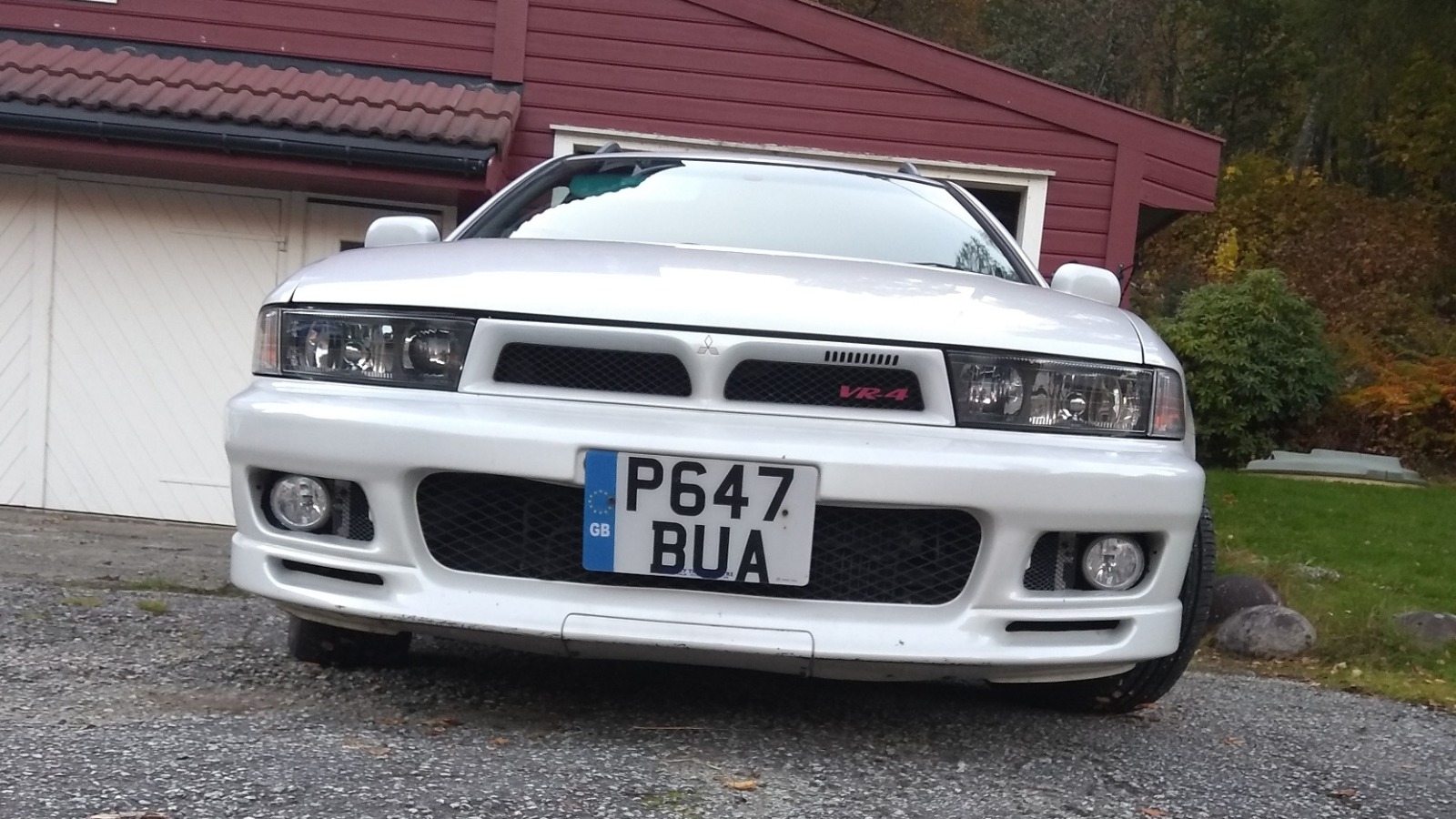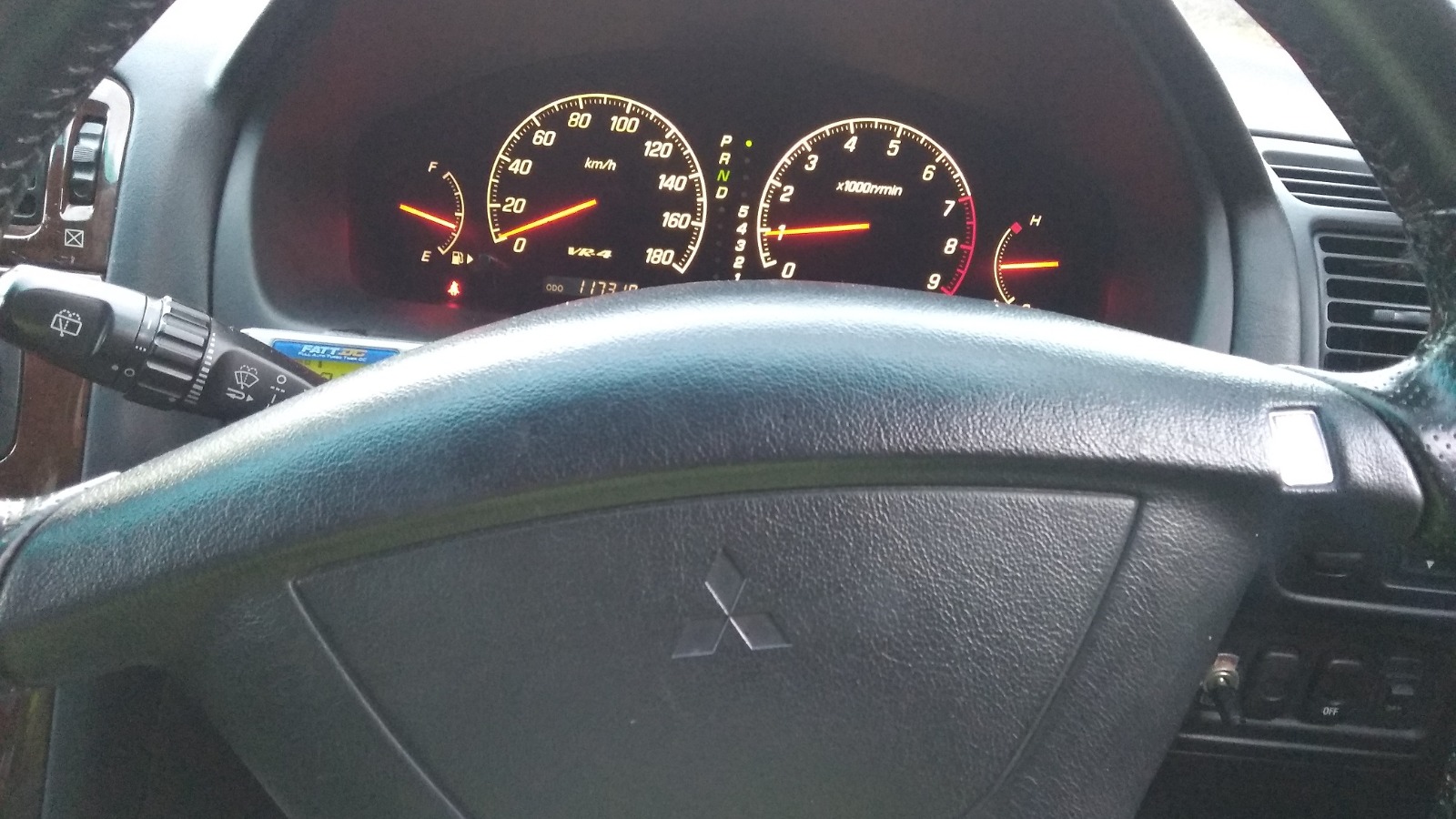1997 Mitsubishi Legnum VR-4 Twin Turbo

Importert fra UK i 2019. The Mitsubishi Legnum VR4 (Viscous- Realtime 4WD) is the Wagon variant of the eighth generation of the four-door sedan, the Galant. The Legnum was introduced to break the supreme reign of the Subaru Legacy that was dominating the estate market in Japan at the time. Though it obviously shares many components with the Galant, it was given various differences as a premium estate. For example, the body was not just a Galant with a modified rear. It was made 1.1 inches taller to secure interior room and luggage space befitting an estate. Built by Ralliart Japan between 1996 and 2002, the Galant and Legnum (estate) VR-4 was based on the Galant V6. Additional power came from a pair of small, efficient turbos, one for each cylinder bank of the 2.5-litre engine, which made driving the VR-4 an altogether more exciting proposition. The engine itself was made more robust with an improved oil system and lowered compression ratio. The intention was to add plenty of power without losing the engine’s silky smoothness, and careful matching of the turbo characteristics to the motor largely ensured this. The dramatic rise in power and torque output meant that the chassis had to undergo some serious work, with strengthening of critical body shell areas and up rating of suspension and braking systems. A four-wheel-drive system based on that of the Lancer Evo was incorporated, and this allowed the effective transfer of power to the tarmac under all manner of road conditions. It could be fully exploited through either a five-speed manual or five-speed automatic transmission, the latter being the INVECS-ll adaptive intelligent ‘box with a Tiptronic-style shift. “The Galant's gearbox has the capability to learn what a driver is like, and then stores their shift patterns in its memory. Without delving into the mysteries of the electronic fuel injection, we know that what we're dealing with here is a motorized Canon Ixus. It's a bunch of super high technology, designed to wage war with the motoring rule book.” J Clarkson Central to the performance of the four-wheel drive system was the Active Yaw Control feature, which used an electronically-controlled rear differential unit that could apportion torque as determined by the AYC computer and its wheel-speed sensors. This helped to control wheel spin as well as limit over steer and under steer conditions, making the handling more predictable and improving the car’s feel on the road. This top model VR-4 was given the AYC that was popularized by the Lancer Evo, ahead of the Lancer Evo. It was also given other advanced technologies like the ASC (Active Stability Control), giving it high driving performance far surpassing those of its rivals. It was given a 5 speed AT early on, giving it that extra edge in driving performance, and it continued to evolve until August 2002. “ So what about the Mitsubishi's active yaw control then? The car's rear end is fitted with a torque transfer differential system with an electronically controlled clutch that senses the condition of the road and the driver's style, then adjusts the yaw force accordingly. And to be honest, I don't remember seeing that listed in the spec of the new Rover 75.” J Clarkson Performance figures for the Galant/Legnum were rapid, even by today’s standards, with the 0 – 100km/h sprint taking just 5.7 seconds for the semi-auto and 5.4 seconds for the manual. “They say it develops only 280bhp, but that's a bit too neat seeing as 280 is the limit under Japanese law. I mean come on chaps. It has got a 2.5-litre twin turbo V6; it does 0-100 km/h in 5.4 seconds; it'll hit 240km/h. Two-eighty brake horsepower my arse» J Clarkson
Spesifikasjoner
